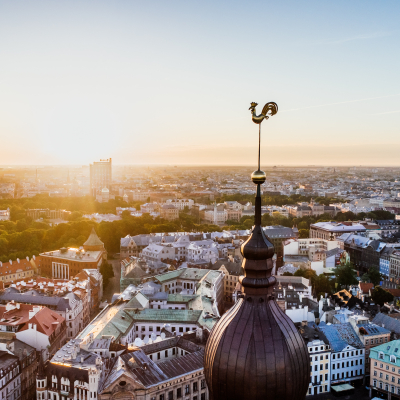Sign up for newsletters
Stay up to date on the weekly newsletters on recent news and activities.
On the world map, Latvia is located on the east coast of the Baltic Sea at the crossroads of Northern and Eastern Europe. Latvia, a parliamentary republic, is bordered by Estonia to the north, Russia and Belarus to the east, and Lithuania to the south, with a maritime border with Sweden to the west. The total length of Latvia’s coastline is 513 km.
Fast facts
| International memberships: | EU and NATO since 2004, WTO since 1998, OECD since 2016 |
| Capital: |
Riga |
| Other major cities: | Daugavpils, Liepaja, Jelgava, Jurmala, Ventspils, Rezekne, Valmiera, Jekabpils |
| Population as of 1 January 2024: | 1.871 million |
| Time: | Eastern European Time (GMT +2 hours) |
| Area: | 64 594 km2 |
| Language: | Latvian (official); Russian, English, and German are also widely spoken |
| Political system: | Republic, parliamentary democracy |
| Legal system: | Based on civil law |
| Currency: | Euro (EUR) |
Quick economy overview
| GDP at current prices (2024): | EUR 40.2 billion |
| GDP per capita (2024): | EUR 21 606 |
| GDP growth (2024): | -0.4 % |
| GDP growth forecast (2025): | 1.2 % |
| Inflation rate (2024): | 1.3 % |
| Accumulated FDI (2024): | EUR 26.3 billion |
| Credit ratings (Standard & Poor’s / Moody’s / Fitch) | A+ / A3 / A- (investment grades) |
Main industries
In 2024, Latvia’s economy continued to be powered by strong performance in manufacturing, trade, and real estate activities. These key sectors remained resilient and formed the backbone of the country’s value creation and long-term growth potential.
Export and import
Latvia is an open economy with close links to trading partners in the region. In 2024 goods were exported from Latvia to 203 countries worldwide. Four largest exports partners were Lithuania, Estonia, Germany and Sweden. To Lithuania, Estonia and Germany agricultural and food products were exported the most, but to Sweden – wood and articles of wood.
The main importers to Latvia are Lithuania, Germany, Poland, Estonia, and the Finland. Latvia’s main imported goods are machinery and equipment, agricultural and food products, vehicles, mineral products.

Address:Perses Street 2, Riga, Latvia, LV-1442
Web: www.investinlatvia.org
For more information: invest@liaa.gov.lv
For tailored advice contact our team of experts
Stay up to date on the weekly newsletters on recent news and activities.
Stay up to date on the weekly newsletters on recent news and activities.